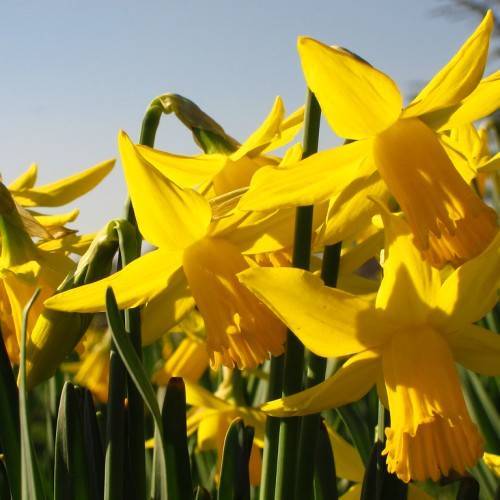
cyclamineus daffodil
Narcissus 'February Gold'
Cycle:
Perennial
Watering:
Average
Hardiness Zone:
4 - 8
Flowers:
Flowers
Sun:
Full sun,part shade
Leaf:
Yes
Growth Rate:
Low
Maintenance:
Low
Care Level:
Medium
watering
The cyclamineus daffodil, also known as Narcissus 'February Gold', needs to be watered often, but not too much. During its active growing season (typically spring to fall), water the cyclamineus daffodil once every week or 2, or when the top 2-3 inches of soil feels dry. If planted in acidic or dry soil, water more frequently. During its dormant season (usually winter), reduce watering to once every other week, or when the soil feels dry. Do not allow the daffodil’s roots to stay wet for prolonged periods of time, as this can cause root rot.
sunlight
The cyclamineus daffodil (Narcissus 'February Gold') prefers partial to full sunlight and is a strong early-season bloomer. It should receive 5 to 6 hours of direct sunlight daily for optimal blooming. The cyclamineus daffodil should receive full direct sun in the morning and partial shade in the afternoon. This will provide the correct amount of sun for the best blooming results.
pruning
One of the best times to prune Cylamineus Daffodil (Narcissus 'February Gold') is in early spring. This will help shape the plant and remove any old, weak or dead foliage. It will also help keep the plant healthy and looking great. The best time to prune is when the daffodil foliage is starting to turn yellow, usually around the end of March or early April. When it comes to how much to prune, you only need to remove the dead foliage and very obviously spent blooms. If the foliage looks healthy and green, it helps to leave the foliage in place. This will help the plant to retain some energy. Once the foliage does start to turn yellow and weak, you can remove it back to the soil level. This will help to keep the plant strong and tidy.
